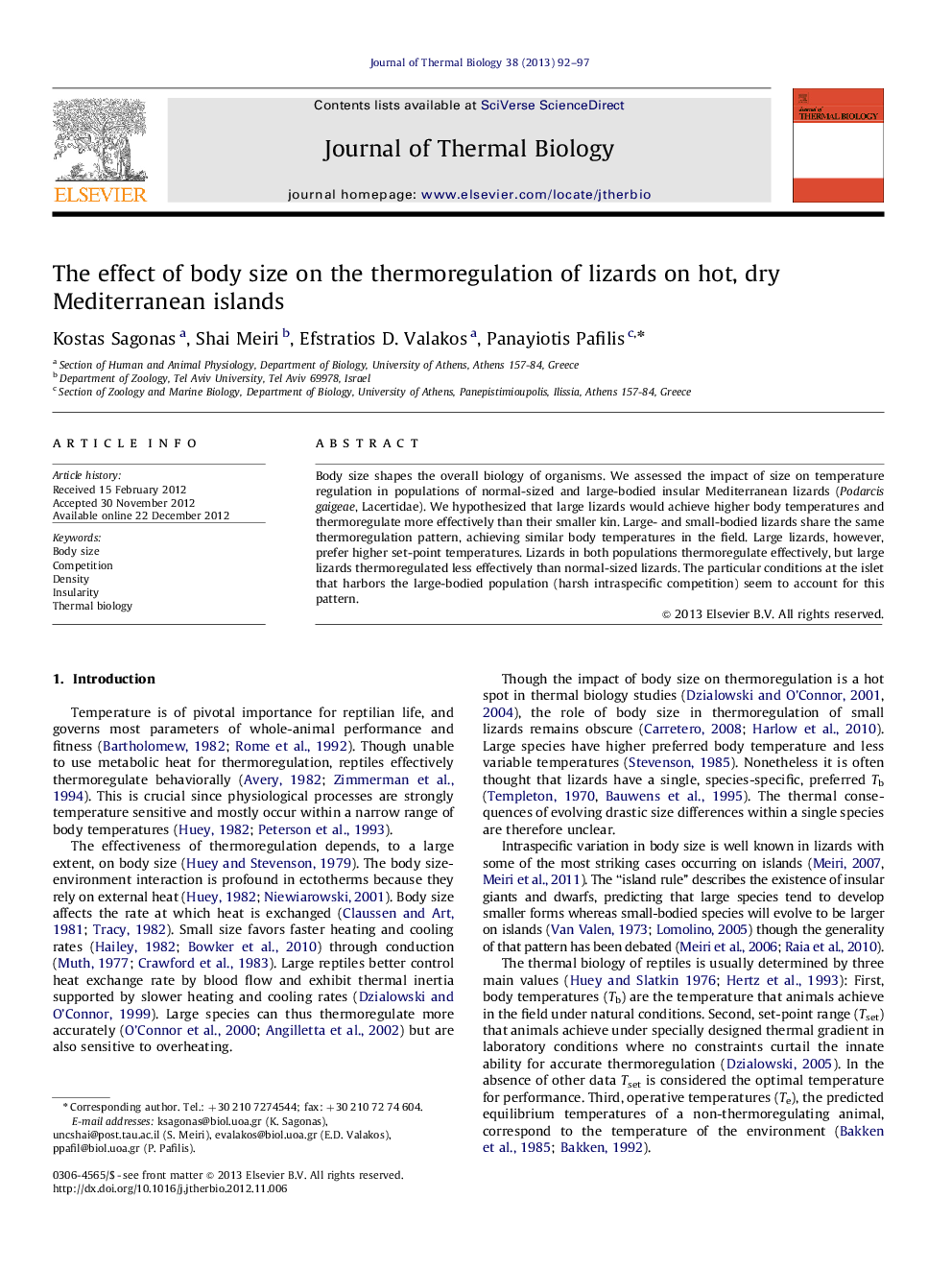| Article ID | Journal | Published Year | Pages | File Type |
|---|---|---|---|---|
| 2843188 | Journal of Thermal Biology | 2013 | 6 Pages |
Body size shapes the overall biology of organisms. We assessed the impact of size on temperature regulation in populations of normal-sized and large-bodied insular Mediterranean lizards (Podarcis gaigeae, Lacertidae). We hypothesized that large lizards would achieve higher body temperatures and thermoregulate more effectively than their smaller kin. Large- and small-bodied lizards share the same thermoregulation pattern, achieving similar body temperatures in the field. Large lizards, however, prefer higher set-point temperatures. Lizards in both populations thermoregulate effectively, but large lizards thermoregulated less effectively than normal-sized lizards. The particular conditions at the islet that harbors the large-bodied population (harsh intraspecific competition) seem to account for this pattern.
► Body, operative and preferred temperatures were measured in lizard populations differing in body size. ► Body mass had no effect on thermoregulation pattern. ► Large lizards prefer higher set-point temperatures and thermoregulate less effectively. ► Strong intraspecific competition in the large-bodied population seem to be the underlying reason.
